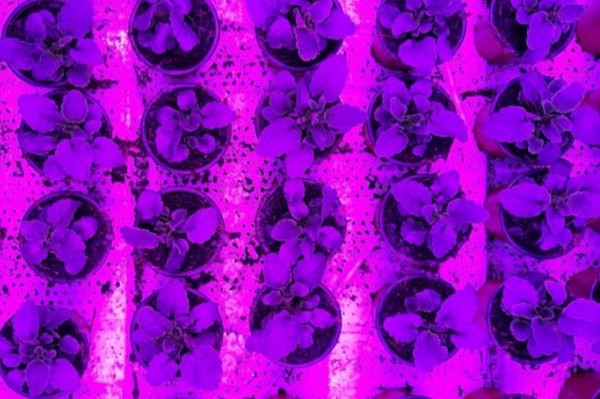Growers of pot- and bedding plants aim to grow compact and resilient crops, but the use of chemical growth retardants needs to be replaced by alternative methods for growing compact plants. Research has shown that certain light colors have an effect on compactness. Furthermore, not only light colors (spectra) are important, but also the period of the day during which a spectrum is realized.
Licht en Groei: duurzaam sturen met licht
For the project 'Licht en Groei: duurzaam sturen met licht' ("Light and growth: sustainably steering with light") two experiments were done at Wageningen University & Research in which different types of bedding plants were cultivated (from seed to flowering plant) under different light spectra. These spectra are realized using LEDs and were selected based on current knowledge on the effect of light on physiological processes in plants.

Increased blue light
Results of the first experiment showed that a spectrum in which the percentage of blue light was increased from 5% to 35%, at the expense of red light, resulted in the most compact-shaped plants. During the second experiment, which finished last month, the researchers tried to find out at what time during the day the application of the high blue spectrum is most efficient; during the first or the last hours of the day? At the moment they are analyzing the data that was collected during this experiment to try and find an answer to this question and ultimately come up with a dynamic light spectrum that can be used to grow compact plants.
This project is financed by the companies of the Club of 100 of the Business Unit Greenhouse Horticulture of Wageningen University & Research and by Kas als Energiebron, the innovation and action program of Glastuinbouw Nederland and the Ministry of Agriculture, Nature and Food Quality of the Netherlands.
 For more information:
For more information:
Wageningen University & Research
www.wur.nl
